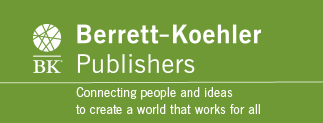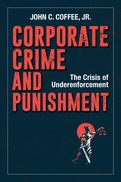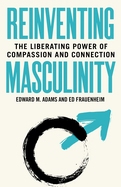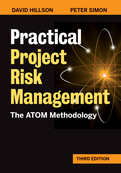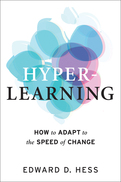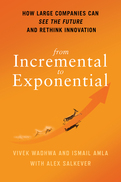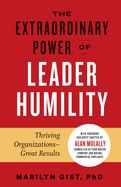Search Results: ""
Results 1099-1104 of 1358
“Professor Coffee's compelling new approach to holding fraudsters to account is indispensable reading for any lawmaker serious about deterring corporate crime.”
—Robert Jackson, former Commissioner, Securities and Exchange Commission
In the early 2000s, federal enforcement efforts sent white collar criminals at Enron and WorldCom to prison. But since the 2008 financial collapse, this famously hasn't happened. Corporations have been permitted to enter into deferred prosecution agreements and avoid criminal convictions, in part due to a mistaken assumption that leniency would encourage cooperation and because enforcement agencies don't have the funding or staff to pursue lengthy prosecutions, says distinguished Columbia Law Professor John C. Coffee. “We are moving from a system of justice for organizational crime that mixed carrots and sticks to one that is all carrots and no sticks,” he says.
He offers a series of bold proposals for ensuring that corporate malfeasance can once again be punished. For example, he describes incentives that could be offered to both corporate executives to turn in their corporations and to corporations to turn in their executives, allowing prosecutors to play them off against each other. Whistleblowers should be offered cash bounties to come forward because, Coffee writes, “it is easier and cheaper to buy information than seek to discover it in adversarial proceedings.” All federal enforcement agencies should be able to hire outside counsel on a contingency fee basis, which would cost the public nothing and provide access to discovery and litigation expertise the agencies don't have. Through these and other equally controversial ideas, Coffee intends to rebalance the scales of justice.
—Robert Jackson, former Commissioner, Securities and Exchange Commission
In the early 2000s, federal enforcement efforts sent white collar criminals at Enron and WorldCom to prison. But since the 2008 financial collapse, this famously hasn't happened. Corporations have been permitted to enter into deferred prosecution agreements and avoid criminal convictions, in part due to a mistaken assumption that leniency would encourage cooperation and because enforcement agencies don't have the funding or staff to pursue lengthy prosecutions, says distinguished Columbia Law Professor John C. Coffee. “We are moving from a system of justice for organizational crime that mixed carrots and sticks to one that is all carrots and no sticks,” he says.
He offers a series of bold proposals for ensuring that corporate malfeasance can once again be punished. For example, he describes incentives that could be offered to both corporate executives to turn in their corporations and to corporations to turn in their executives, allowing prosecutors to play them off against each other. Whistleblowers should be offered cash bounties to come forward because, Coffee writes, “it is easier and cheaper to buy information than seek to discover it in adversarial proceedings.” All federal enforcement agencies should be able to hire outside counsel on a contingency fee basis, which would cost the public nothing and provide access to discovery and litigation expertise the agencies don't have. Through these and other equally controversial ideas, Coffee intends to rebalance the scales of justice.
A wonderful book for thinking about how to release ourselves from crippling processes. It's time for men-and for all of us-to stand up and say, Give us back our full humanity, give us back our dignity.'
-Paul Gilbert, PhD, author of The Compassionate Mind
A wonderful book for thinking about how to release ourselves from crippling processes. It's time for men-and for all of us-to stand up and say, Give us back our full humanity, give us back our dignity.'
-Paul Gilbert, PhD, author of The Compassionate Mind
In a recent FiveThirtyEight poll, 60 percent of men surveyed said society puts pressure on men to behave in a way that is unhealthy or bad. Men account for 80 percent of suicides in the United States, and three in ten American men have suffered from depression. Ed Adams and Ed Frauenheim say a big part of the problem is a model of masculinity that's become outmoded and even dangerous, to both men and women.
The conventional notion of what it means to be a man-what Adams and Frauenheim call Confined Masculinity-traps men in an emotional straitjacket; steers them toward selfishness, misogyny, and violence; and severely limits their possibilities. As an antidote, they propose a new paradigm: Liberating Masculinity. It builds on traditional masculine roles like the protector and provider, expanding men's options to include caring, collaboration, emotional expressivity, an inclusive spirit, and environmental stewardship.
Through hopeful stories of men who have freed themselves from the strictures of Confined Masculinity, interviews with both leaders and everyday men, and practical exercises, this book shows the power of a masculinity defined by what the authors call the five Cs: curiosity, courage, compassion, connection, and commitment. Men will discover a way of being that fosters healthy, harmonious relationships at home, at work, and in the world.
-Paul Gilbert, PhD, author of The Compassionate Mind
A wonderful book for thinking about how to release ourselves from crippling processes. It's time for men-and for all of us-to stand up and say, Give us back our full humanity, give us back our dignity.'
-Paul Gilbert, PhD, author of The Compassionate Mind
In a recent FiveThirtyEight poll, 60 percent of men surveyed said society puts pressure on men to behave in a way that is unhealthy or bad. Men account for 80 percent of suicides in the United States, and three in ten American men have suffered from depression. Ed Adams and Ed Frauenheim say a big part of the problem is a model of masculinity that's become outmoded and even dangerous, to both men and women.
The conventional notion of what it means to be a man-what Adams and Frauenheim call Confined Masculinity-traps men in an emotional straitjacket; steers them toward selfishness, misogyny, and violence; and severely limits their possibilities. As an antidote, they propose a new paradigm: Liberating Masculinity. It builds on traditional masculine roles like the protector and provider, expanding men's options to include caring, collaboration, emotional expressivity, an inclusive spirit, and environmental stewardship.
Through hopeful stories of men who have freed themselves from the strictures of Confined Masculinity, interviews with both leaders and everyday men, and practical exercises, this book shows the power of a masculinity defined by what the authors call the five Cs: curiosity, courage, compassion, connection, and commitment. Men will discover a way of being that fosters healthy, harmonious relationships at home, at work, and in the world.
This new edition of an award-winning risk management classic is more actionable than ever with new chapters on facilitating risk conversations and running a risk workshop.
Risk isn't just about threat; it's also about opportunity. You have to be ready to take advantage of the most unexpected events—good or bad—with any project you are managing. But how does this work in practice? The Active Threat and Opportunity Management (ATOM) methodology offers a simple, scalable risk process that applies to all projects in all industries and business sectors. For each process step, the authors offer practical advice, hints, and tips on how to get the most out of the risk management process.
Risk management really can work in practice. This Project Management Institute award-winning methodology is already used by top corporations. Whether you are someone with no prior knowledge of risk management or someone who simply needs guidance on how to apply risk management successfully, this book will help you tackle the ups and downs of this unpredictable world.
Risk isn't just about threat; it's also about opportunity. You have to be ready to take advantage of the most unexpected events—good or bad—with any project you are managing. But how does this work in practice? The Active Threat and Opportunity Management (ATOM) methodology offers a simple, scalable risk process that applies to all projects in all industries and business sectors. For each process step, the authors offer practical advice, hints, and tips on how to get the most out of the risk management process.
Risk management really can work in practice. This Project Management Institute award-winning methodology is already used by top corporations. Whether you are someone with no prior knowledge of risk management or someone who simply needs guidance on how to apply risk management successfully, this book will help you tackle the ups and downs of this unpredictable world.
Hyper-Learning
2020
“Ed Hess's Hyper-Learning is uniquely practical and is the essential starting point for charting new ways of thinking, living, working, leading, and being fulfilled in our new world.”
—Gary Roughead, Admiral, US Navy (retired) former Chief of Naval Operations
The Digital Age will raise the question of how we humans will stay relevant in the workplace. To stay relevant, we have to be able to excel cognitively, behaviorally, and emotionally in ways that technology can't.
Professor Ed Hess believes that requires us to become Hyper-Learners: continuously learning, unlearning, and relearning at the speed of change. To do that, we have to overcome our reflexive ways of being: seeking confirmation of what we believe, emotionally defending our beliefs and our ego, and seeking cohesiveness of our mental models.
Hyper-Learning requires a new way of being and a radical new way of working. In Part 1 of this how-to book, Hess takes a practical workbook approach and helps readers create their Hyper-Learning Mindset, choose and embrace their needed Hyper-Learning Behaviors, and adopt their daily Hyper-Learning Practices. In Part 2, Hess focuses on how to humanize the workplace to optimize Hyper-Learning. Featuring case studies of three business leaders and two public companies, this book shows how to harness the power of human emotions, choices, and behaviors to enable the highest levels of human cognitive, emotional, and behavioral performance—individually and organizationally.
—Gary Roughead, Admiral, US Navy (retired) former Chief of Naval Operations
The Digital Age will raise the question of how we humans will stay relevant in the workplace. To stay relevant, we have to be able to excel cognitively, behaviorally, and emotionally in ways that technology can't.
Professor Ed Hess believes that requires us to become Hyper-Learners: continuously learning, unlearning, and relearning at the speed of change. To do that, we have to overcome our reflexive ways of being: seeking confirmation of what we believe, emotionally defending our beliefs and our ego, and seeking cohesiveness of our mental models.
Hyper-Learning requires a new way of being and a radical new way of working. In Part 1 of this how-to book, Hess takes a practical workbook approach and helps readers create their Hyper-Learning Mindset, choose and embrace their needed Hyper-Learning Behaviors, and adopt their daily Hyper-Learning Practices. In Part 2, Hess focuses on how to humanize the workplace to optimize Hyper-Learning. Featuring case studies of three business leaders and two public companies, this book shows how to harness the power of human emotions, choices, and behaviors to enable the highest levels of human cognitive, emotional, and behavioral performance—individually and organizationally.
“This timely book reminds us that innovation is agnostic about where it's created.”
—Satya Nadella, CEO, Microsoft
Over and over, we see big legacy businesses getting beaten to the punch by energetic little start-ups. It seems like innovation can come from only the bottom up or from the outside in. But tech experts Vivek Wadwha and Ismail Amla are here to tell you that “big equals slow and stodgy” is a myth. Based on decades of experience working with both the world's leading brands and disruptive start-ups, this book explores the opportunity legacy companies have to create new markets, supercharge growth, and remake their businesses by combining the mindset and tool belt of start-ups with the benefits of incumbency: boatloads of customer data, decades of brand equity, robust distribution channels, enormous financial assets, and more.
Wadhwa and Amla go deeply into why the pace and dynamics of innovation have changed so dramatically in recent years and show how companies can overcome obstacles like the Eight Deadly Sins of Stasis. Equally important, they provide a playbook on how to use their insights in your own company, team, or career. This fast-paced, anecdote-rich story rethinks modern innovation—a book every manager, executive, and ambitious employee will want to read.
—Satya Nadella, CEO, Microsoft
Over and over, we see big legacy businesses getting beaten to the punch by energetic little start-ups. It seems like innovation can come from only the bottom up or from the outside in. But tech experts Vivek Wadwha and Ismail Amla are here to tell you that “big equals slow and stodgy” is a myth. Based on decades of experience working with both the world's leading brands and disruptive start-ups, this book explores the opportunity legacy companies have to create new markets, supercharge growth, and remake their businesses by combining the mindset and tool belt of start-ups with the benefits of incumbency: boatloads of customer data, decades of brand equity, robust distribution channels, enormous financial assets, and more.
Wadhwa and Amla go deeply into why the pace and dynamics of innovation have changed so dramatically in recent years and show how companies can overcome obstacles like the Eight Deadly Sins of Stasis. Equally important, they provide a playbook on how to use their insights in your own company, team, or career. This fast-paced, anecdote-rich story rethinks modern innovation—a book every manager, executive, and ambitious employee will want to read.
“This inspiring book belongs on the desk of every CEO and politician. With eye-opening case studies and recommended behaviors in every chapter, it's an indispensable user guide for servant leaders.”
—Ken Blanchard, coauthor of The New One Minute Manager and coeditor of
Servant Leadership in Action
On the most fundamental level, leaders must bring divergent groups together and forge a consensus on a path forward. But what makes that possible? Humility—a deep regard for the dignity of others—is the key, says distinguished leadership educator Marilyn Gist.
Leadership is a relationship, and humility is the foundation for all healthy relationships. Leader humility can increase engagement and retention. It inspires and motivates. Gist offers a model of leader humility derived from three questions people ask of their leaders: Who are you? Where are we going? Do you see me? She explores each of these questions in depth, as well as the six key qualities of leader humility: a balanced ego, integrity, a compelling vision, ethical strategies, generous inclusion, and a developmental focus.
Much of this book is based on Gist's interviews with a dozen distinguished leaders of organizations such as the Mayo Clinic, Costco, REI, Alaska Airlines, Starbucks, and others. And the foreword and a guest chapter are written by Alan Mulally, the legendary leader who brought Ford back from the brink of bankruptcy after the 2008 financial collapse and whose work is an exemplar of leader humility.
—Ken Blanchard, coauthor of The New One Minute Manager and coeditor of
Servant Leadership in Action
On the most fundamental level, leaders must bring divergent groups together and forge a consensus on a path forward. But what makes that possible? Humility—a deep regard for the dignity of others—is the key, says distinguished leadership educator Marilyn Gist.
Leadership is a relationship, and humility is the foundation for all healthy relationships. Leader humility can increase engagement and retention. It inspires and motivates. Gist offers a model of leader humility derived from three questions people ask of their leaders: Who are you? Where are we going? Do you see me? She explores each of these questions in depth, as well as the six key qualities of leader humility: a balanced ego, integrity, a compelling vision, ethical strategies, generous inclusion, and a developmental focus.
Much of this book is based on Gist's interviews with a dozen distinguished leaders of organizations such as the Mayo Clinic, Costco, REI, Alaska Airlines, Starbucks, and others. And the foreword and a guest chapter are written by Alan Mulally, the legendary leader who brought Ford back from the brink of bankruptcy after the 2008 financial collapse and whose work is an exemplar of leader humility.
